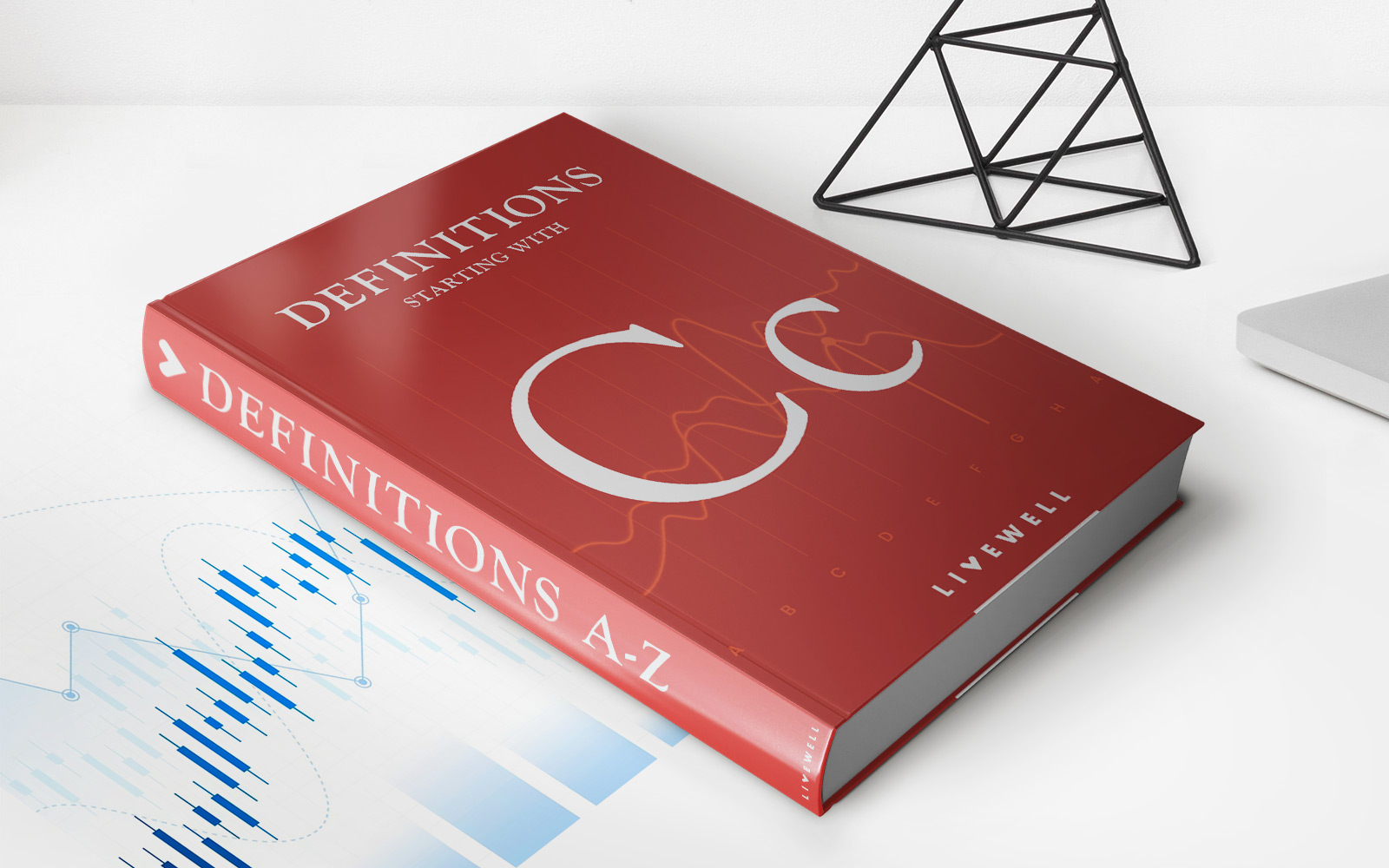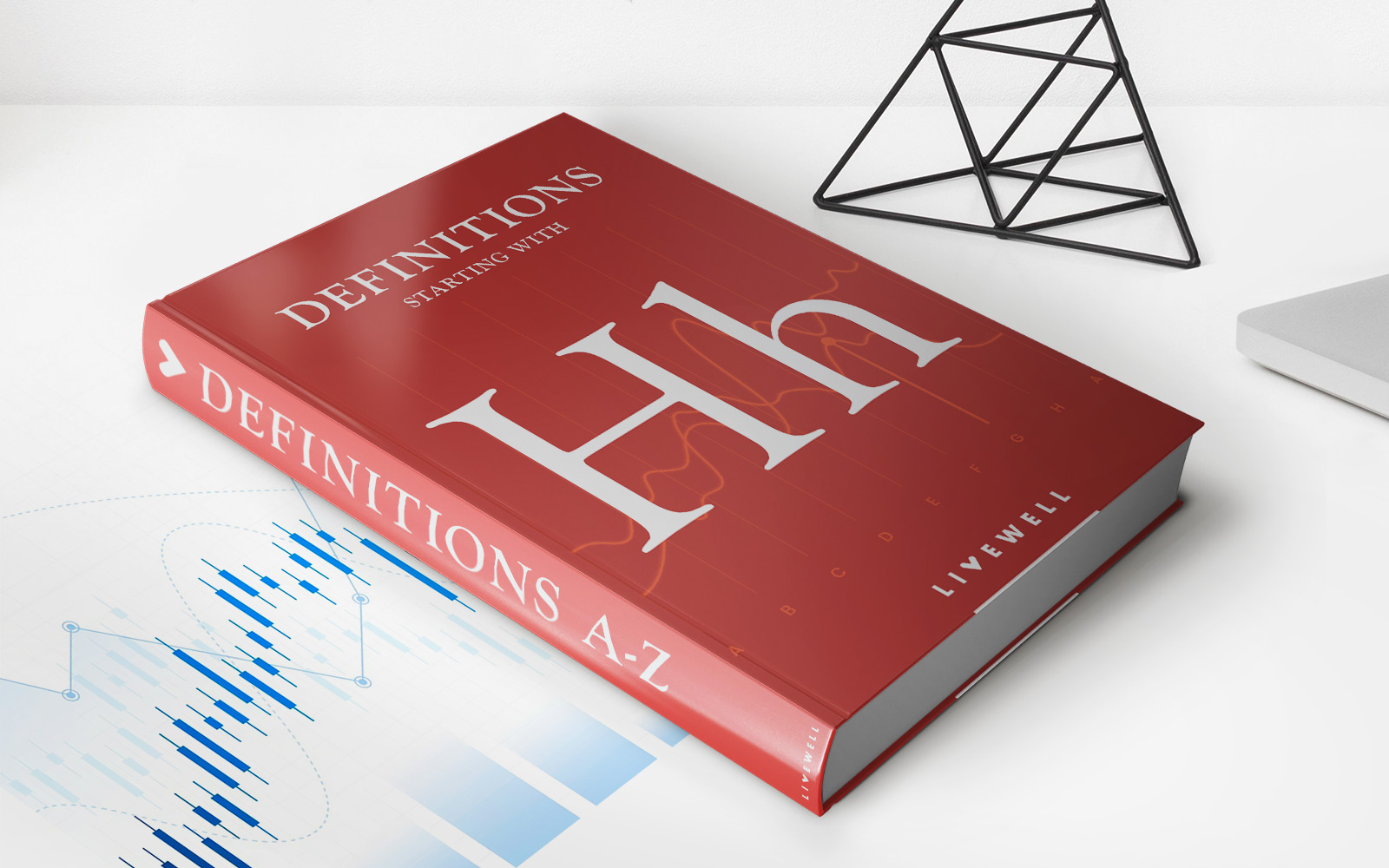

Finance
CPI Vs. GDP Deflator: Which Is Better?
Published: October 28, 2023
Discover the pros and cons of using CPI and GDP deflator as measuring tools in finance. Find out which one is better suited for your needs.
(Many of the links in this article redirect to a specific reviewed product. Your purchase of these products through affiliate links helps to generate commission for LiveWell, at no extra cost. Learn more)
Table of Contents
Introduction
When it comes to measuring economic activity and price levels, two commonly used indices are the Consumer Price Index (CPI) and the Gross Domestic Product (GDP) Deflator. These indices offer valuable insights into inflation and provide a basis for understanding the overall health of an economy.
The CPI is a measure of the average change over time in the prices paid by urban consumers for a market basket of consumer goods and services. It tracks the cost of living by taking into account a wide range of goods and services, including housing, transportation, food, and healthcare. This index is released on a monthly basis and is widely used by individuals, businesses, and policymakers to gauge inflationary trends and make informed decisions.
On the other hand, the GDP deflator measures changes in the overall price level of goods and services included in the calculation of GDP. It reflects the average price change for all goods and services produced in an economy. It is calculated by dividing the nominal GDP by the real GDP and then multiplying by 100. The GDP deflator is typically released on a quarterly basis and is used to assess changes in the purchasing power of a country’s currency and to compare inflation levels across different countries.
While both the CPI and GDP deflator serve as important tools for measuring inflation, they have distinct differences that make them suitable for different purposes. In this article, we will explore the similarities and differences between the CPI and GDP deflator and discuss when and how they should be used.
Understanding CPI
The Consumer Price Index (CPI) is a comprehensive measure of price changes for a basket of goods and services commonly consumed by urban consumers. It provides valuable insights into changes in the cost of living and inflation rates. The CPI is calculated by taking the weighted average of price changes for each item in the basket of goods, with the weights reflecting the relative importance of each item in household spending.
The CPI tracks a wide range of consumer goods and services, including housing, transportation, food, medical care, and education. It is designed to capture the price changes of goods and services at the retail level, reflecting the prices paid by consumers in the urban areas of a country.
The Bureau of Labor Statistics (BLS) in the United States is responsible for calculating and publishing the CPI on a monthly basis. The BLS gathers data by collecting prices for thousands of specific items from various retail outlets, service providers, and professionals across different geographic areas. The collected data is then used to compute the price changes and calculate the index.
The CPI is expressed as an index number, with the base period set to 100. The percentage change in the index represents the inflation rate over a given period. For example, if the CPI increases by 2% from one year to another, it indicates that the overall price level for consumer goods and services has risen by 2%.
The CPI is widely used by individuals, businesses, and policymakers for various purposes. Consumers rely on the CPI to monitor changes in the cost of living and make adjustments to their budgets. Businesses utilize the CPI to analyze inflationary trends and adjust pricing strategies. Policymakers use the CPI as a tool for setting monetary policy, adjusting Social Security benefits, and making decisions related to economic planning and forecasting.
It is important to note that the CPI has some limitations. One limitation is that it may not accurately reflect the experience of every individual or household, as spending patterns may vary. Another limitation is that the CPI does not capture changes in quality, which can affect the perceived value of a good or service. Despite these limitations, the CPI remains a valuable indicator for tracking inflation and understanding changes in the cost of living.
Understanding GDP Deflator
The Gross Domestic Product (GDP) Deflator is an economic indicator that measures changes in the overall price level of goods and services included in the calculation of a country’s GDP. It is used to gauge inflation and evaluate changes in the purchasing power of a country’s currency. The GDP Deflator represents the average change in prices for all final goods and services produced within an economy.
To calculate the GDP Deflator, nominal GDP is divided by real GDP and then multiplied by 100. Nominal GDP measures the total value of goods and services produced in an economy at current prices, while real GDP adjusts for changes in the overall price level, providing a measure of true economic growth. The resulting ratio represents the index number that reflects changes in the overall price level over time.
The GDP Deflator takes into account a broader range of goods and services compared to the Consumer Price Index (CPI), as it includes both consumer goods and capital goods. It covers various sectors of the economy, such as manufacturing, construction, services, and agriculture. As a result, the GDP Deflator provides a comprehensive view of price changes across the entire economy.
The GDP Deflator is typically released on a quarterly basis and is widely used for macroeconomic analysis, policy-making, and international comparisons. Economists and policymakers utilize the GDP Deflator to assess changes in the purchasing power of a country’s currency, track inflation rates, and evaluate economic performance. It also allows for comparisons of inflation levels between different countries, providing insight into relative price levels and competitiveness.
One advantage of using the GDP Deflator is that it considers changes in the prices of all goods and services generated within an economy, including those that are not directly consumed by individuals. This broader perspective helps capture the overall impact of price changes on the economy’s output and reflects changes in the cost of production.
However, the GDP Deflator also has limitations. It can be influenced by factors other than changes in prices, such as changes in the composition of goods and services produced. Additionally, it may not accurately reflect price changes for specific consumer goods and services, as it includes a wide range of economic activities. These limitations highlight the importance of using multiple economic indicators in conjunction with the GDP Deflator to gain a comprehensive understanding of an economy’s price level and inflationary trends.
Differences between CPI and GDP Deflator
The Consumer Price Index (CPI) and the Gross Domestic Product (GDP) Deflator are both important measures of inflation, but they have distinct differences in terms of their calculation method, scope, and purpose.
Calculation Method: The CPI is based on the prices of a fixed basket of consumer goods and services, which are weighted according to their importance in household spending. It measures changes in the cost of living for urban consumers. On the other hand, the GDP Deflator is calculated by dividing nominal GDP by real GDP and then multiplying by 100. It reflects the overall price level of all goods and services included in the calculation of GDP.
Scope: The CPI focuses on consumer goods and services, such as housing, transportation, food, and healthcare. It provides insights into changes in the cost of living for individuals and households. In contrast, the GDP Deflator covers a broader range of goods and services, including consumer goods, capital goods, government spending, and exports. It offers a comprehensive view of price changes across the entire economy.
Purpose: The CPI is primarily used by individuals, businesses, and policymakers to monitor changes in the cost of living, adjust budgets, and make informed decisions. It is widely used for tracking inflation rates and assessing changes in purchasing power. On the other hand, the GDP Deflator is utilized for macroeconomic analysis, policy-making, and international comparisons. It helps evaluate changes in the overall price level, track inflation rates, and assess economic performance.
Frequency of Release: The CPI is typically published on a monthly basis, providing frequent updates on inflation trends. This allows for more timely monitoring of changes in consumer prices. The GDP Deflator, however, is generally released on a quarterly basis, providing a broader view of price changes over a longer time period.
Weighting Methodology: The weights used in the CPI calculation are based on household expenditure patterns and reflect the importance of different goods and services in consumer spending. These weights are updated periodically to ensure they remain representative of current consumption patterns. In contrast, the GDP Deflator does not use consumer spending weights. It relies on the value of production and expenditure in different sectors of the economy to measure overall price changes.
Overall, the CPI and GDP Deflator serve distinct purposes and provide different perspectives on inflation. The CPI focuses on consumer prices and changes in the cost of living, while the GDP Deflator offers a broader view of price changes across the entire economy. Both indices are valuable tools for understanding and analyzing inflationary trends, but their specific applications depend on the context and objectives of the analysis.
Comparing CPI and GDP Deflator
While both the Consumer Price Index (CPI) and the Gross Domestic Product (GDP) Deflator are measures of inflation, they differ in terms of their calculation method, focus, and uses. Understanding these differences can help in choosing the appropriate index for specific purposes.
Calculation Method: The CPI is calculated using a fixed basket of goods and services that represent what consumers typically purchase. It tracks price changes for these specific items over time, with weights assigned based on their importance in household spending. On the other hand, the GDP Deflator is calculated by comparing nominal GDP to real GDP, providing a measure of the overall price level of goods and services included in GDP.
Focus: The CPI primarily focuses on consumer goods and services, reflecting the prices paid by urban consumers. It is a widely used indicator for monitoring changes in the cost of living and inflation rates that directly affect individuals and households. In contrast, the GDP Deflator covers a broader range of goods and services, including those consumed by individuals, businesses, government, and exports. It represents the overall price level within the entire economy.
Uses: The CPI is commonly used by individuals and households to budget and make informed decisions about their finances. Businesses utilize the CPI to adjust pricing strategies and analyze inflation trends. Policymakers use it as a basis for economic policy decisions, such as determining Social Security adjustments or evaluating the impact of price changes on different income groups. On the other hand, the GDP Deflator is used for macroeconomic analysis, such as assessing changes in the purchasing power of a country’s currency, comparing inflation levels across countries, and evaluating economic performance over time.
Scope: The CPI provides a detailed picture of changes in consumer prices and cost of living. It includes a wide range of goods and services, such as housing, transportation, food, and healthcare. In contrast, the GDP Deflator covers a broader scope, encompassing consumer goods, capital goods, government spending, and exports. It offers a more comprehensive view of price changes across different sectors of the economy.
Frequency of Release: The CPI is typically released on a monthly basis, allowing for more frequent monitoring of consumer price changes and inflation trends. This provides timely data for individuals, businesses, and policymakers to make informed decisions. The GDP Deflator, on the other hand, is usually released on a quarterly basis, providing a broader view of overall price changes over a longer time period.
Both the CPI and GDP Deflator play critical roles in understanding inflation and economic performance. Choosing between them depends on the specific purpose and context of the analysis. The CPI is more suitable for individual consumption analysis, adjusting budgets, and tracking changes in the cost of living. The GDP Deflator, with its broader scope, is better suited for macroeconomic analysis, evaluating changes in the overall price level, and comparing inflation across countries.
Limitations of CPI and GDP Deflator
While the Consumer Price Index (CPI) and the Gross Domestic Product (GDP) Deflator are widely used economic indicators, it is important to understand their limitations. These limitations can impact the accuracy and applicability of the indices in certain contexts.
CPI Limitations:
- The CPI may not accurately represent individual experiences as it relies on average price changes for a fixed basket of goods and services. Spending patterns vary among households, meaning that the CPI may not capture the price changes of specific goods and services that an individual may consume more or less of.
- The CPI does not account for changes in quality. If the quality of a good or service improves over time, the CPI may not reflect the increased value or decreased cost effectively.
- The CPI can be influenced by substitution bias. As prices of certain goods rise, consumers may choose to substitute them with cheaper alternatives. The CPI assumes fixed consumption patterns, which may not accurately reflect consumer behaviors.
- The CPI does not consider regional price differences. Prices can vary significantly by location, and the CPI only provides a national average.
GDP Deflator Limitations:
- The GDP Deflator can be affected by factors other than price changes, such as changes in the composition and quality of goods and services produced. This can make it difficult to isolate the true impact of price changes on the overall index.
- The GDP Deflator does not capture price changes for goods and services that are not included in the calculation of GDP. This includes non-market activities like volunteer services or the underground economy.
- The GDP Deflator may not accurately reflect price changes for specific consumer goods and services, as it includes a wide range of economic activities beyond consumer spending.
- The GDP Deflator is calculated quarterly, which means it provides a less frequent update on price changes compared to the monthly updates of the CPI.
Despite these limitations, the CPI and GDP Deflator remain valuable tools for tracking inflation and understanding changes in the cost of living and overall price levels. To mitigate the limitations, it is often recommended to use these indices in conjunction with other economic indicators and data sources for a more comprehensive analysis.
Conclusion
The Consumer Price Index (CPI) and the Gross Domestic Product (GDP) Deflator are essential economic indicators that provide insights into inflation and changes in the overall price level. While they serve different purposes and have distinct calculation methods, they both offer valuable information for individuals, businesses, and policymakers.
The CPI focuses on consumer goods and services, tracking changes in the cost of living and offering a measure of inflation that directly affects individuals and households. It is used to adjust budgets, make informed financial decisions, and evaluate changes in purchasing power. On the other hand, the GDP Deflator provides a broader view of price changes across the entire economy, including both consumer goods and capital goods. It is utilized for macroeconomic analysis, policymaking, and international comparisons.
Both indices have their limitations. The CPI may not represent the experiences of all individuals, as it relies on average price changes for a fixed basket of goods and services. It also does not account for changes in quality and may be influenced by substitution bias. The GDP Deflator can be affected by factors other than price changes and may not accurately reflect price changes for specific consumer goods and services.
To overcome these limitations, it is important to consider using additional economic indicators and data sources in conjunction with the CPI and GDP Deflator. This will provide a more comprehensive understanding of inflation and price level changes. Additionally, it is crucial to interpret and analyze the indices in the context of specific needs and objectives.
In conclusion, the CPI and GDP Deflator are valuable tools for monitoring inflation and evaluating changes in the cost of living and overall price levels. By understanding their differences, limitations, and appropriate uses, individuals, businesses, and policymakers can make more informed decisions and gain a deeper understanding of the economic landscape.














